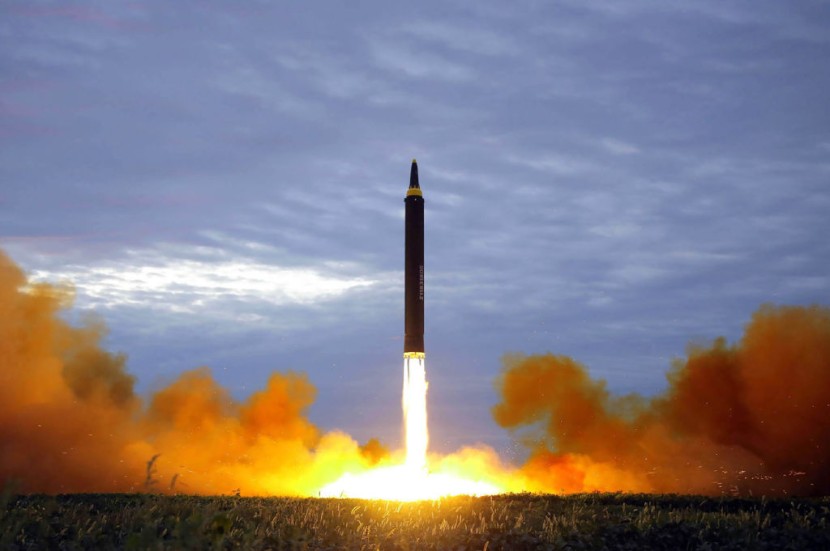
This week, North Korea claimed to have successfully tested a new, more powerful rocket engine, suggesting that the country was making progress on a solid-fuel intercontinental ballistic missile, a new type of nuclear weapon that North Korean leader Kim Jong-un has expressed interest in developing.
According to the official Korean Central News Agency, on Thursday, North Korean Academy of Defense Science engineers conducted a ground test of a high-thrust solid-fuel motor at the Sohae Satellite Launching Ground in Tongchang-ri, in the country's far northwest. Kim Jong Un was reportedly present for the test.
North Korea Rocket Engine
North Korea claimed that the test proved the engine's efficacy in terms of its thrust. However, this technology suffers from the same flaws as the rest, as per New York Times.
Given the power of the engine, which North Korea claimed to be the first of its kind in the country, experts believe the test was conducted to build a new solid-fuel intercontinental ballistic missile (ICBM).
The country has been trying to increase its stockpile of solid-fuel missiles, which are less prone to malfunction and can be launched with less advance notice.
Professor at Seoul's Ewha University Leif-Eric Easley that Pyongyang's claim of testing a solid-fuel motor for longer-range ballistic missiles bolsters its more aggressive, recently declared doctrine of using nuclear weapons if the Kim leadership or strategic assets come under threat.
In the hands of North Korea's nuclear forces, this innovation would increase their adaptability, durability, and lethality, according to Aljazeera.
Japan Builds 2 Huge Warships
Meanwhile, it was reported that the two newest destroyers in the Japanese Maritime Self-Defense Force, the JS Maya and JS Haguro, had successfully tested anti-ballistic missiles off the coast of Hawaii.
The revelation comes as North Korea has conducted a record-breaking series of missile tests, firing over 50 missiles in the past two months and eight ICBMs since January and as Japan has increased its ballistic-missile defense capabilities to eight mission-capable ships.
One of the missiles was launched on October 3 and was the first in five years to pass directly over the Japanese mainland. Japan's unique ballistic-missile defense system, which mainly relies on specially outfitted warships to intercept incoming missiles, is under review as a result of the launches.
Japanese destroyers equipped with the Aegis Ballistic Missile Defense System are sent out to intercept incoming ballistic missiles while they are still in their mid-course stage and outside the earth's atmosphere. The Air Self-Defense Force of Japan is in charge of Patriot missile-defense batteries armed with Patriot Advanced Capability-3 missiles, which can destroy a ballistic missile in its last stage, right before it re-enters the atmosphere.
The Type 03 medium-range surface-to-air missile systems under the command of Japan's Ground Self-Defense Force are designed to intercept any missiles flying at a medium altitude, Business Insider via MSN reported.
Related Article : 'Major' Donald Trump Announcement Sparks Hilarious Backlash: It's Just for His NFT Cards!
@YouTube
© 2025 HNGN, All rights reserved. Do not reproduce without permission.








